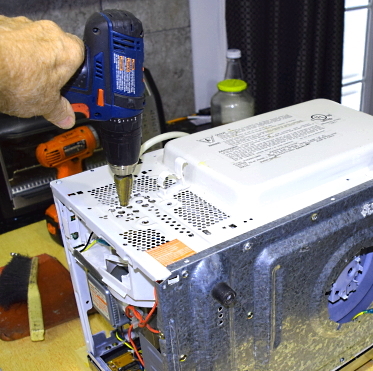
How to Fix An Overheating Countertop Microwave Oven
Does your Microwave oven overheat and then shutdown, especially after cooking or heating up a large dish or container of liquid? This happens when the high voltage parts inside get too hot causing the thermal fuse (snap disc cut-off switch) to open for safety to prevent further and dangerous overheating. After the Microwave has cooled down, the thermal switch should automatically reset, and the oven will function normally again. But, if this happens often, the safety switch can wear out causing it to open at lower and lower temperatures eventually making the oven practically unusable until the cut-off switch (available on Amazon) is replaced. Breakers in your home's Electric Panel work similarly. To lessen the chances of this happening, make sure that you have lots of room around your oven for ventilation - at least 4" behind and beside and 8" above, more is better.
Always unplug the unit before taking the cover off and then short the capacitor (below, right) with a screwdriver. Then unplug the (red) wires from the magnetron. Below shows a large heat sink on the microwave, taken from a broken stereo receiver unit which I cut up into smaller pieces. (below, left)
To further assist in cooling, I bonded three heat sink pieces to the magnetron top section and one to the larger assembly underneath, with 5 minute epoxy cement from Dollarama (far left). You can also order heat sinks from Amazon with or without the Thermal Conductive Tape.
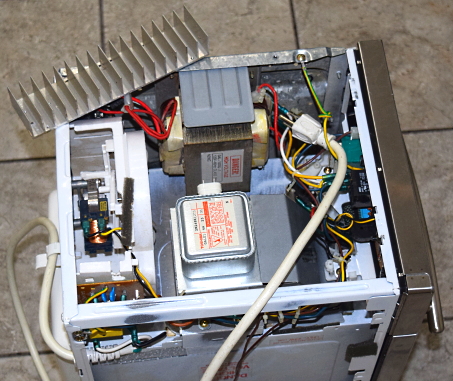
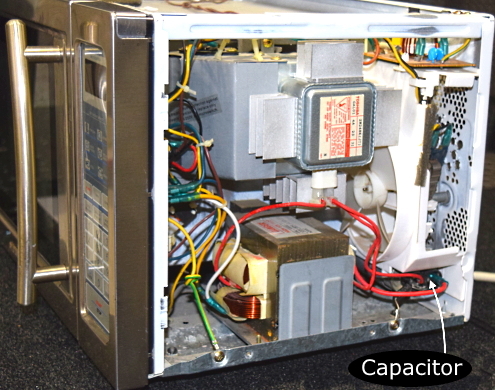
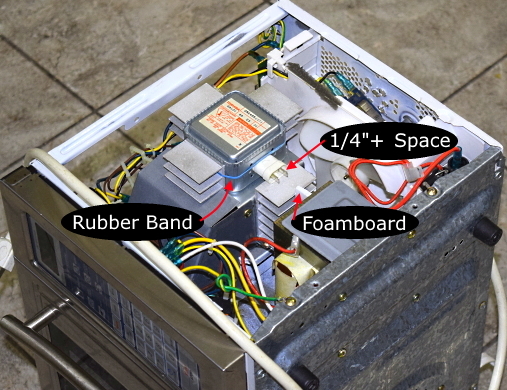
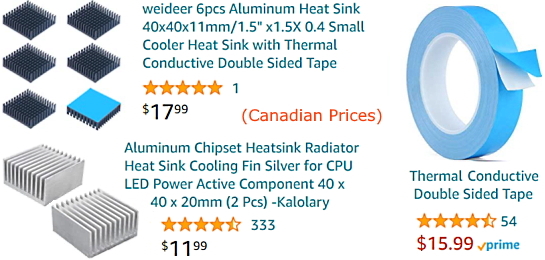
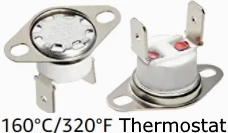

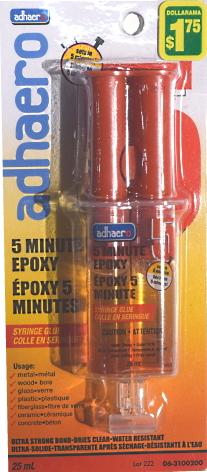
After you have mixed your epoxy and applied it to the heat sinks, three of them are pressed onto the top (coolest) part of the magnetron and held tight with the blue rubber band. With a piece of foamboard (or thick cardboard) the larger heat sink is held to the lower part, the actual magnetron, which contains the two large, powerful magnets and internal cooling fins. This is where most of the heat is generated and where we've placed our largest cooling fin. It's also the only place where one fits, as the opposite side is blocked and the adjacent sides are open for air flow from the fan.
Cutting up the large heat sink with my bandsaw, but a manual hacksaw with a vice works just as well, albeit a bit slower, of course.
This Sylvania model, although built in 2004, is still modern looking and the technology has changed very little since. The front is stainless clad and the case (top/sides piece) is solid stainless sheet steel. Most units today just use a black or grey plastic front, with some stainless tape, which may have a tendency to peel off over time.
Placed in the corner there is more ventilation than appears in the photo and the cupboards are two feet above the countertop - see Build A Chef's Kitchen page.
It is generally advisable not to put things on top of your microwave as that can insulate the case from dissipating some heat. Since the magnetron is on the right side, this case only gets warm there, and is not affected by the mortar and pestle in the center. Although this unit still gets warm after a long cooking session at full power, it does run cooler and has never tripped the cut-off switch and shut down.

This like-new oven was given to me because it kept overheating and shutting down, and eventually wouldn't work at all. I replaced the thermostat switch, but this model had too few vent holes so I added a dozen larger ones. The step drill works well in sheet metal but I put piece of paper (not shown), underneath to catch the metal shavings, and then blew it out afterwards (outside) with an air compressor.
Another trick is to avoid cooking at full heat for long periods of time. Instead of using full power for five minutes, use 50% power for ten minutes, etc., depending on your oven's susceptibility to overheat. With most microwaves, the heat causing magnetron is on the right side. You should be able to hold your hand down on top of this area without discomfort, after a long cooking session. If it's very hot, you can cool it down faster by running the oven for a minute or two with the power set to 0 (zero). This allows the cooling fan to operate without the magnetron turning on. Some models may not have enough air intake holes and you can improve this by adding some more or enlarging some others.
or use Browser's Back Arrow
